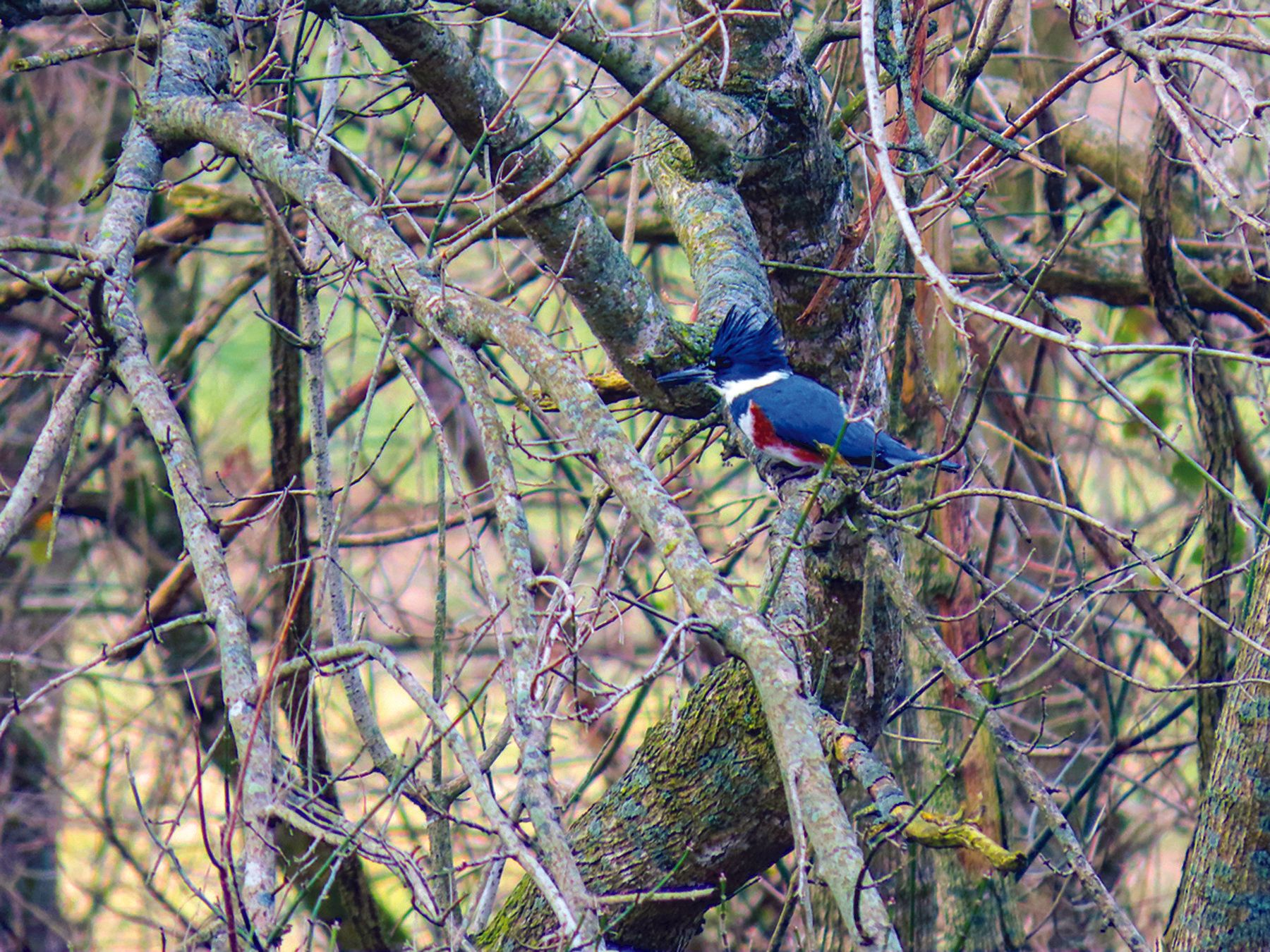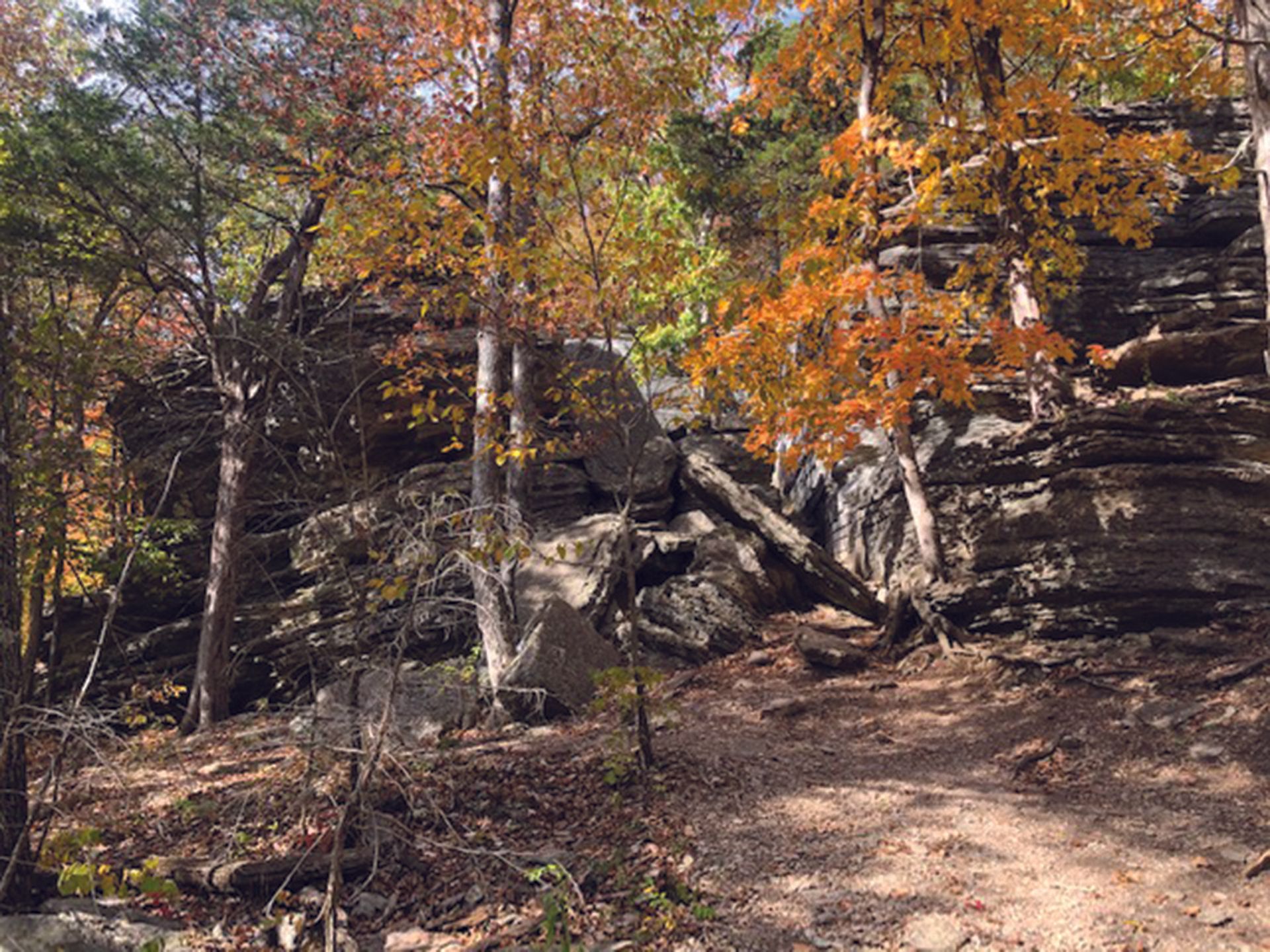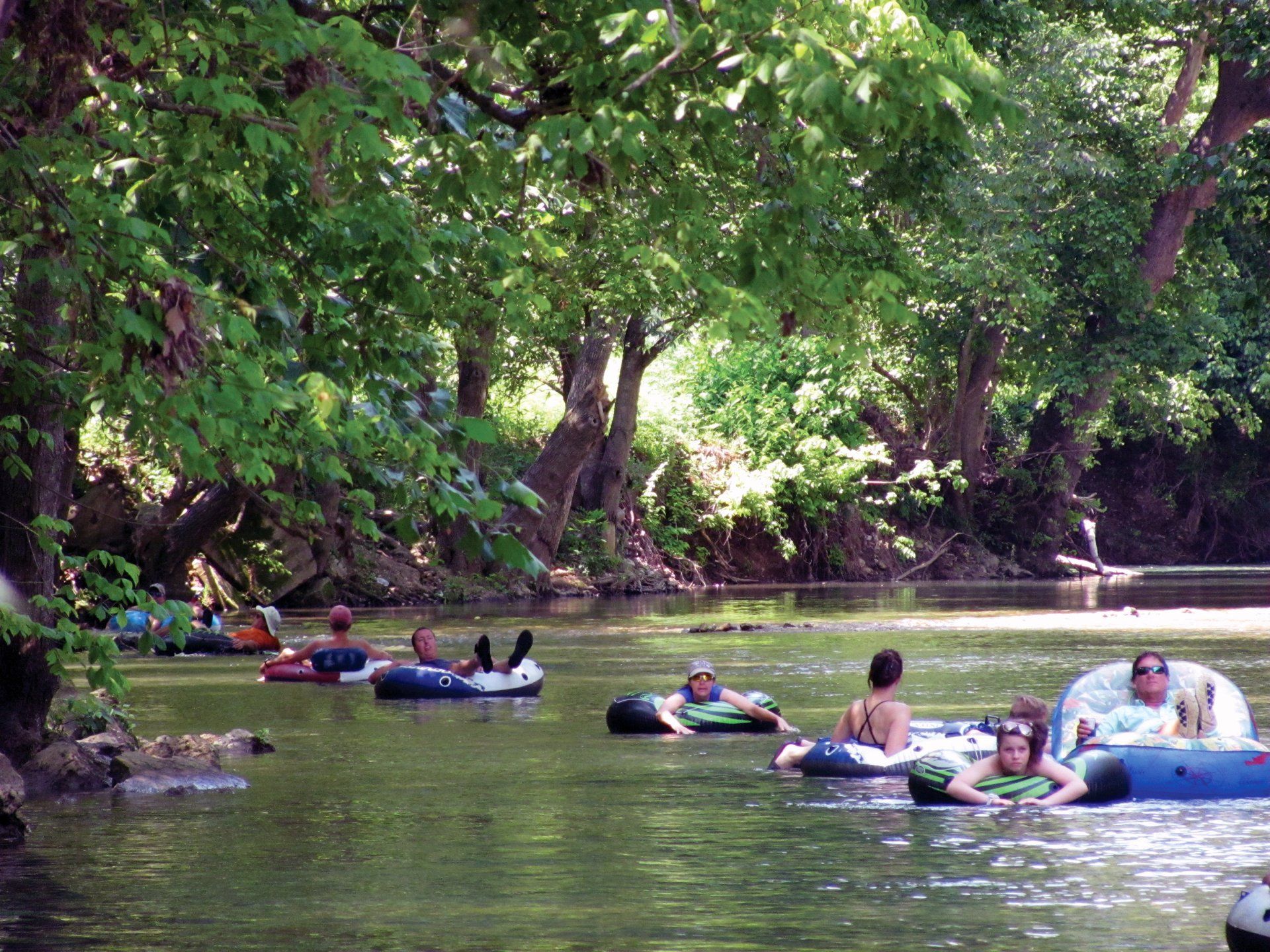Plan your next trip to Roaring River

How much time do you have?
Make the Most of Your Trip to Roaring River
Trip ideas based on your length of stay
Roaring River State Park can serve as a pit stop on a road trip or a multi-week getaway.
While most visitors come to fish, not all visitors come prepared to wet a line. These trip ideas will make sure you get the most out of your stay whether you fish or are just hoping to get away.
30-minute activities
If you only have a short time to spend in the park, you better make the most of it. No trip to Roaring River State Park is complete without a visit to the spring and hatchery.
Feed the fish at the spring pool
You will want to bring a cup and a couple of quarters so that you can feed the trout. Feed is dispensed by machines operated by quarters, similar to a gumball machine. The cup makes it easier to hold on to the little brown pellets. Take your time strolling past the raceways of rainbow trout. The kids will be delighted at the splashing of trout in a feeding frenzy.
Deer Leap Trail, 0.2 miles long
If you have the time and want to stretch your legs, don’t miss the overlook on Deer Leap Trail. This short trail can be completed in 15 minutes. Keep in mind that Deer Leap Trail does include natural stone steps. The steps may be too much for those with limited mobility
2-hour activities
In addition to visiting the spring and hatchery, your extra time can be spent taking a stroll along the river or checking out the displays at the Ozark Chinquapin Nature Center.
Ozark Chinquapin Nature Center
Often over-looked, the Ozark Chinquapin Nature Center is a small museum housed in the historic shower house built by the Civilian Conservation Corps in the 1930s. The Nature Center is a great place to learn about park landscapes, geology, fossils and human history.
The nature center is home to two live snakes! Love them or hate them, these two king snakes have had an important role in helping visitors overcome their fear of snakes. The staff at the Nature Center are available to answer questions about park resources or offer suggestions on hiking trails or other activities.
Spring House Trail, 0.4 miles long
Park at the bottom of the large lot in front of the Emory Melton Inn and Conference Center. Begin by crossing a small wooden footbridge over a wet weather creek, and soon after a short up-hill section, you will make a choice to go right or left. Left will keep you moving uphill to make the loop in a clockwise pattern. Right will take you to a flatter part of the trail before leading to a short incline toward a small cave.
The Springhouse Cave offers a bit of “free air conditioning.” Kneel down toward the cave opening to feel a cool breeze. You will complete the loop by retracing your steps back down the hill toward the wooden footbridge. If you visit the Emory Melton Inn for a hot lunch, this is a great trail to walk off your meal.
River Trail,
0.7 miles long
This trail offers great views of the river and the birds that live along the banks. Start at the Amphitheater or the Nature Center. As you walk along the dolomite bluff, keep your ears open for the rattle of the belted kingfisher as he takes flight.
If you are quiet, the focused fisherman may not even notice you as you pass by. Keep in mind that this trail is measured one way. Plan for a friend to pick you up at the other end or turn around and retrace your steps to the start of the trail.
2-4 hour activities
A half-day is just enough time to scratch the surface of what Roaring River State Park has to offer. Plan ahead to sign up for an interpretive program or pack a daypack for a hike.
Learn More About The Park
Interpretive programs at Roaring River State Park include hatchery tours, guided hikes, crafts, games and more. Interpretive programs are a great way to learn more about park resources and develop a deeper understanding of why the park is so important.
Check the park information boards to find a schedule of interpretive programs. Visitors are asked to call the nature center before the program at 417-847-3742. The number of participants is limited at each program to better allow for social distancing. Participants are encouraged to wear a face covering.
Piburn Creek Trail,
1 mile long
Park at the trailhead located near the pit toilet in campground 1. Hike the 1 mile trail and use the campground road to make a loop back to your vehicle or just explore this beautiful creek. There are a variety of rocks in the creek bed to explore.
Make a scavenger hunt for colorful chert, or discover the fossilized remains of ancient sea-life. This creek is typically dry in the summer, but you will want waterproof shoes after rain.
Devil’s Kitchen Trail,
1.5 miles long
When at the park, ask staff for a copy of the Devil’s Kitchen interpretive trail guide. Begin at the trailhead that is across the river from the CCC Lodge. When you get to the fork at the small rock outcrop, turn right to follow the stops in order. The first stops are the only two caves in the park that are open to the public! Bring a head lamp or use your smart phone to illuminate the small caverns.
The last stop is at the trail’s namesake. The Devil’s Kitchen is a geologic feature with cultural history. It is said that Civil War soldiers used this rock feature as a shelter. Any spot used as shelter would likely have evidence that people had cooked over a fire. Historic accounts tell a story of the burnt end of a stick being used to inscribe “the devil has slept here” on the shelter wall. Since then the area is known as the Devil’s Kitchen.
Due to erosion and the constant weathering of rock, the shelter room has collapsed. Today, the kitchen appears to be a pile of limestone perfect for rock scrambling. Caves, history and a diverse forest setting make this easy-to-follow trail a Roaring River favorite.
4-5 hour activities
The following trails are best for hikers with some experience. Waterproof boots are recommended, especially after wet weather. Please bring a map, water and a good trail snack. Both trails have excellent opportunities for a scenic snack rest.
Eagle’s Nest Trail,
2.6 miles long
There is no longer an Eagle’s Nest, but it provides excellent views in the winter and plenty of shade in the summer. The north aspect of the trail keeps hikers cool. This trail does incorporate a gravel road in order to create a loop. Keep an eye out for signs that will point you in the right direction.
This trail has excellent examples of Ozark geology as well as unique ferns that grow well on the moist shady hillside. Be prepared for one of the steepest trail sections in the park. The west segment of the loop travels straight up hill to rejoin the gravel road that will lead you back to the trailhead spur.
Fire Tower Trail,
3.75 miles long
This is the best way to experience all the major ecosystems in the park. This trail has three major trailheads and can be hiked in conjunction with Deer Leap Trail by using the white connector.
Be prepared for a steep up and a steep down on loose gravel. Most of the trail follows the ridge top and passes under the oak-hickory forest. A small section on the southeast corner of the loop opens up to the grasses and flowers of an Ozark glade. Glades are a rare landscape that the park works to maintain. You may notice the remnants of the prescribed fire from November 2020. The trail crosses Highway F in two places.
Visitors can enjoy scenes along Roaring River while hiking a short piece of the trail. The trail ends in Campground 3 and at the Nature Center. These two ends can be connected to make a loop. Walk along the gravel stocking road to avoid the campground traffic and enjoy the river scenery. By the end of this 4 mile loop you will have earned a trip to the park store for one of their awesome ice cream cones.
Full-day activities
Any combination of the activities listed above will keep even the most active family busy. However, one idea you may not think of is a float trip adventure.
Tube Floating Roaring River
Bring your inner tubes if you are ready to get in the cold spring water of Roaring River. This is best done after noon on a very hot day and will reduce your chance of interrupting folks fishing in the catch and release area. Also, waiting until mid-day may make the cold spring water bearable.
Swimming, wading and floating are allowed at the beginning of Fishing Zone 2. Start your float below Dry Hollow in the picnic area. Float past the picnic area, under the Highway F Bridge and between Campgrounds 2 and 3. Floaters must exit the river before the handicap fishing pier located across from the Eagle’s Nest Trailhead.
There is a gravel bar at the bend of the river where you need to exit. Past this area, is fishing only. Park a vehicle at Eagle’s Nest Trailhead in Campground 2 behind site 95, to shuttle your floaters back to camp.
Weekend Plans
Addison Mena, left, and Jacob Stensrud proudly show off their explorer patches.
Aaron Stensrud | Special to the Trout Times
If you don’t have enough ideas to fill a weekend here, let’s share one more idea to keep you busy. Earning an Explorer Patch will keep your family learning, while making memories at Roaring River State Park.
Earn the Explorer Patch
The Missouri State Park Explorer Program is an opportunity to learn more about your favorite parks. If you complete all the requirements you earn a free badge.
Sign up by visiting the Nature Center. You will get a card to record the activities you complete. Participants must attend three interpretive programs, complete two interpretive studies and identify 10 natural items. The park hosts enough programs to complete the program in one weekend, but if you need more time, save your card and complete it on your next visit.
You can also take your card to other Missouri state parks. Most parks and historic sites in the Missouri State Park system have summer programs or tours that count towards earning your badge. There are no age restrictions and no time limits. So go ahead and sign up!
After all your hard work, you will have a sense of accomplishment and a new appreciation for your Missouri State Parks.
















